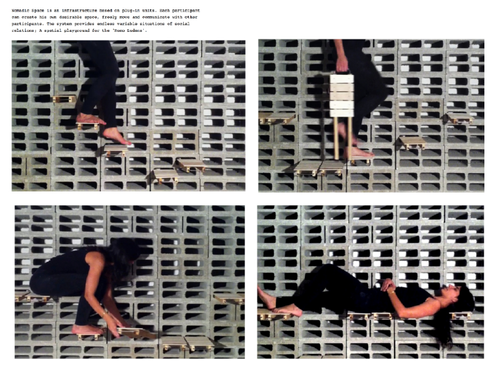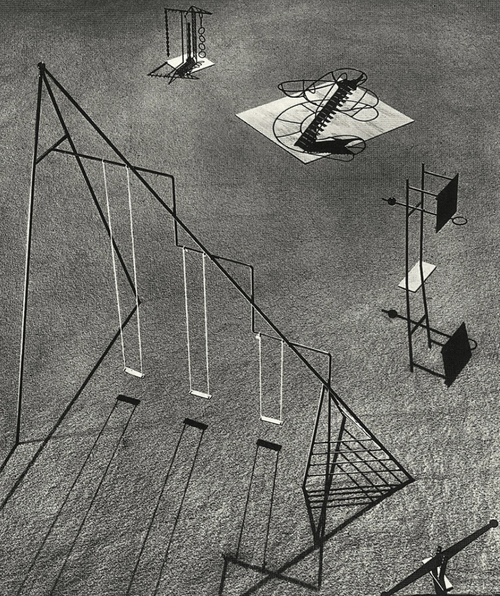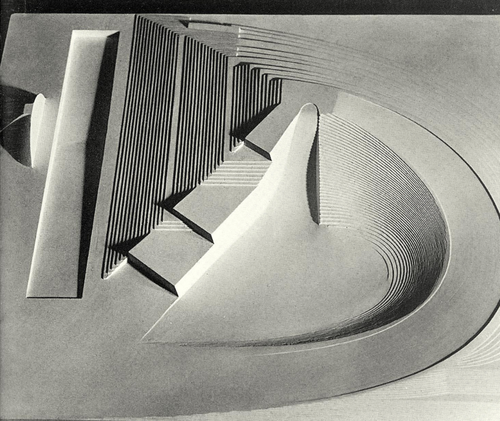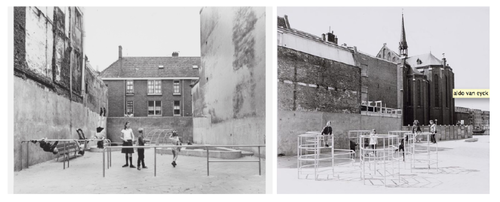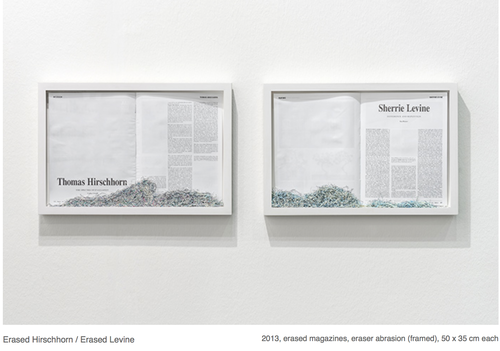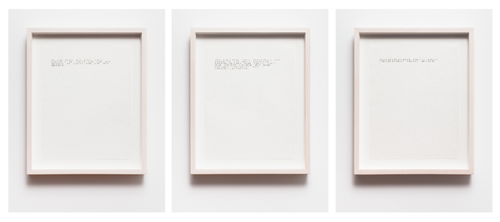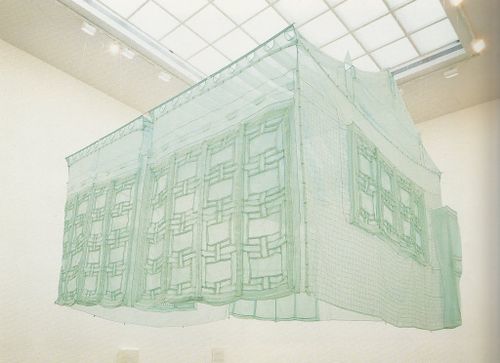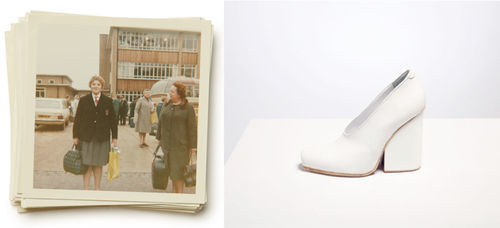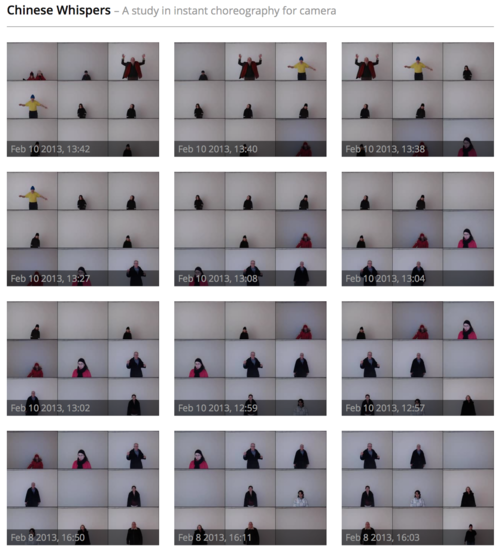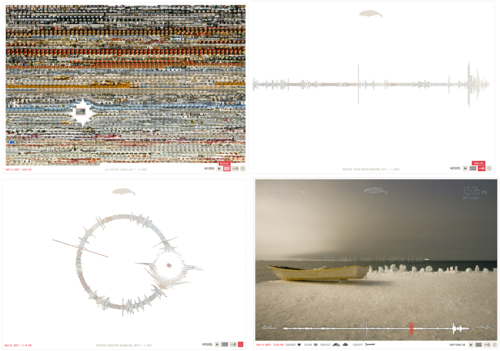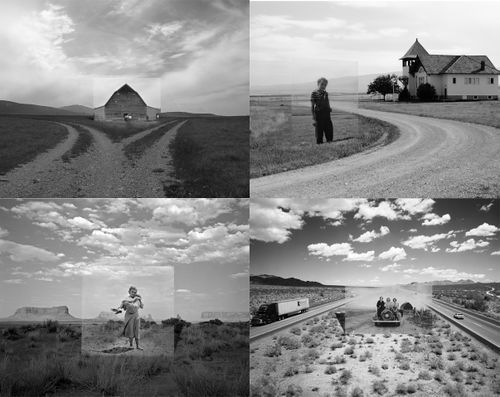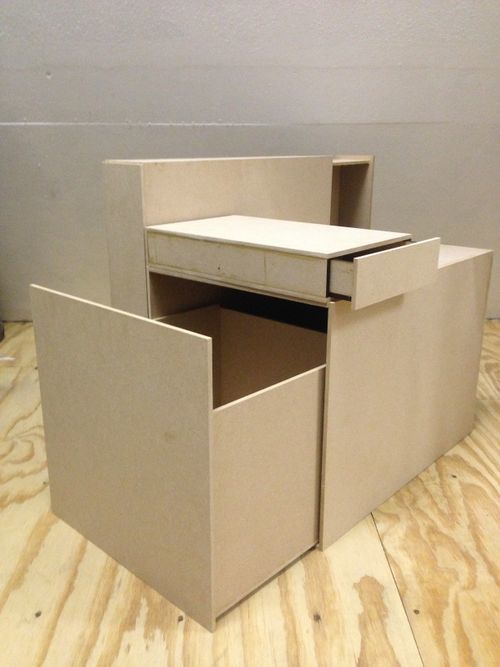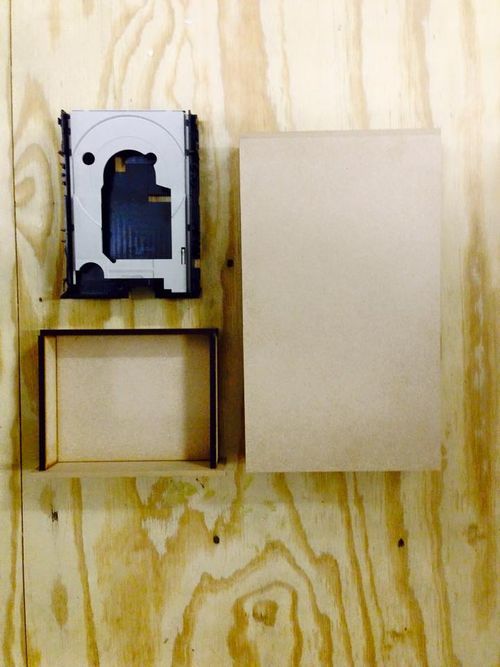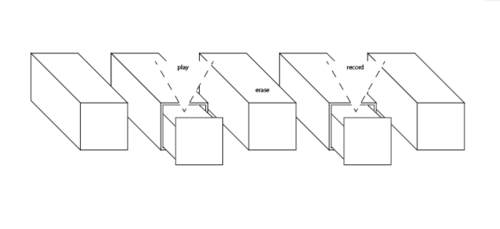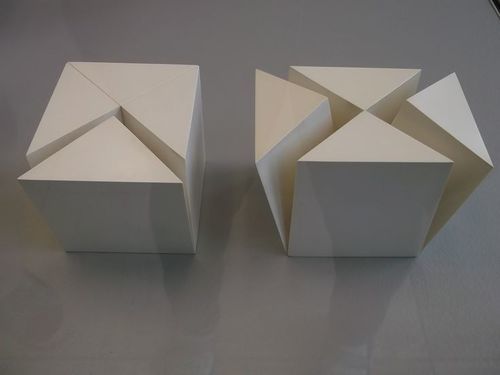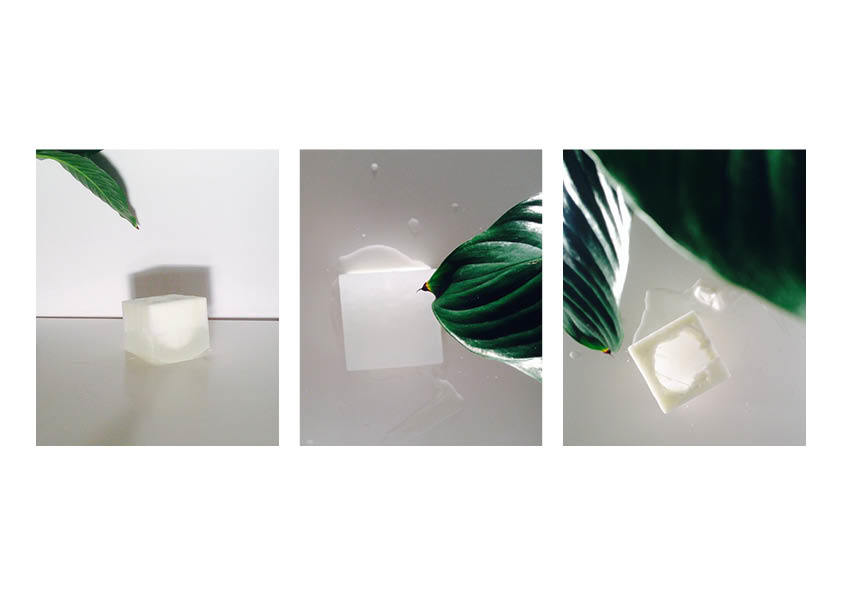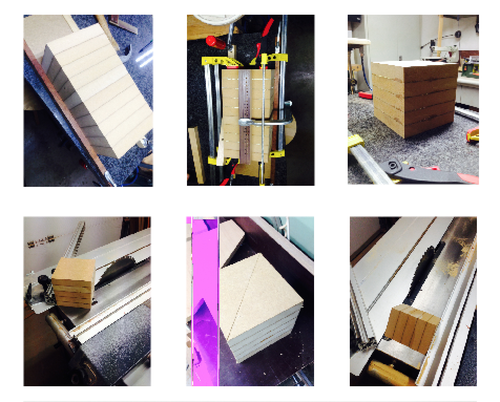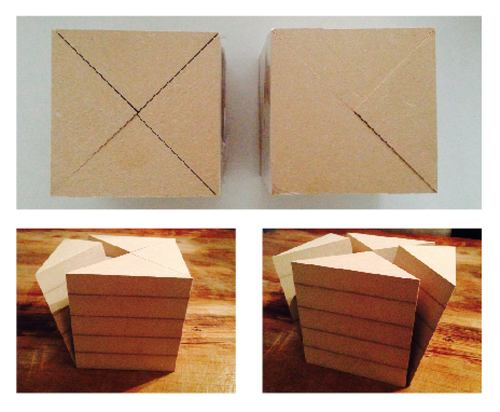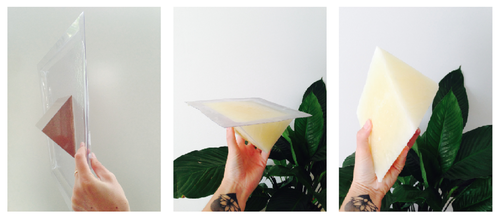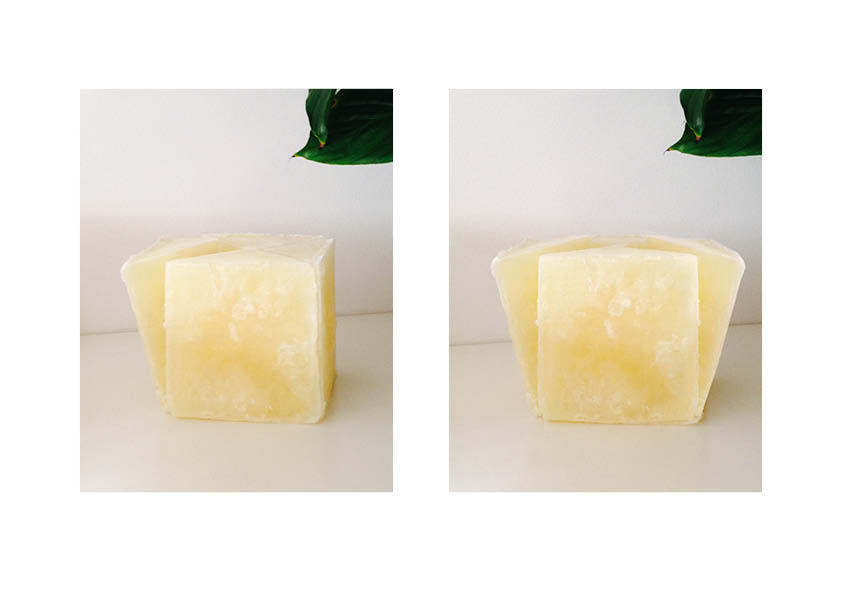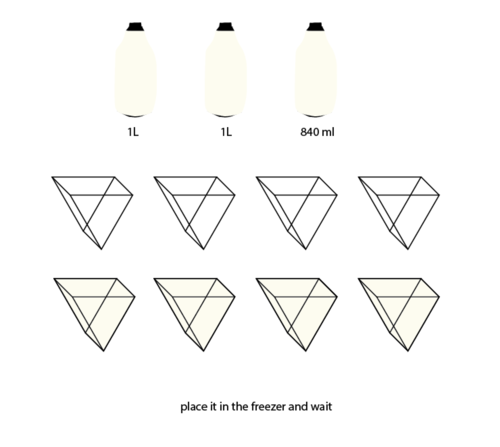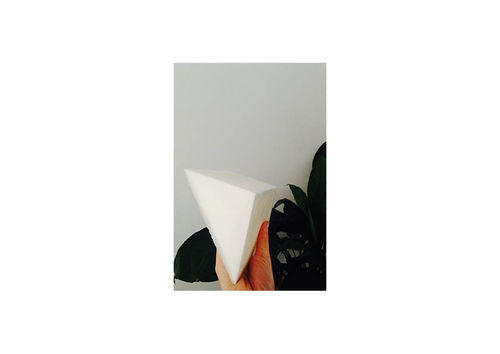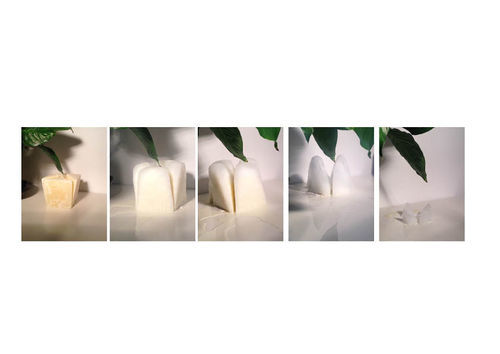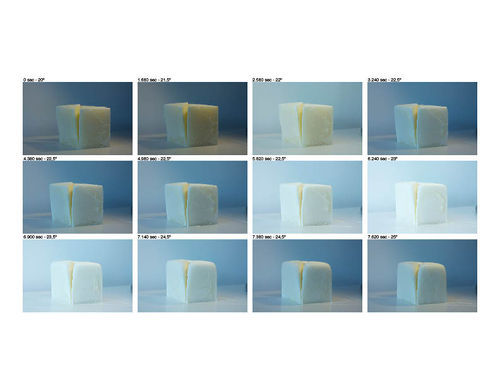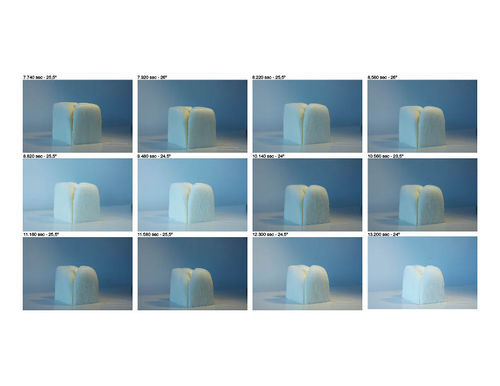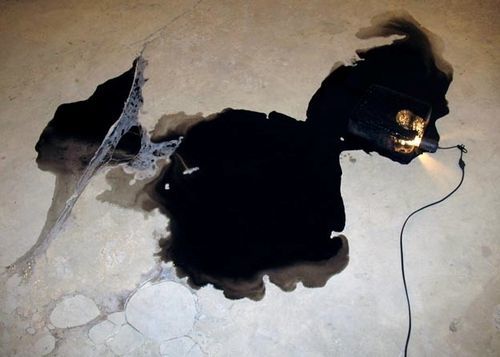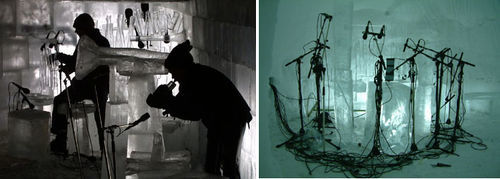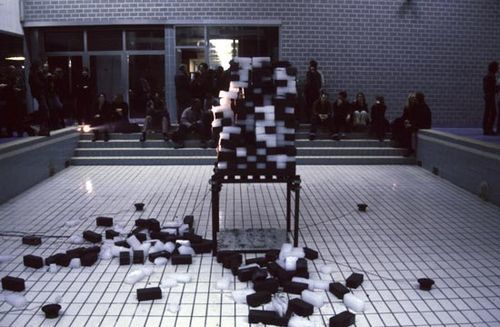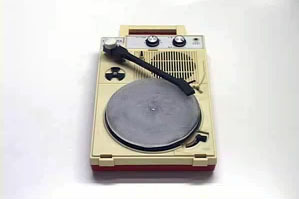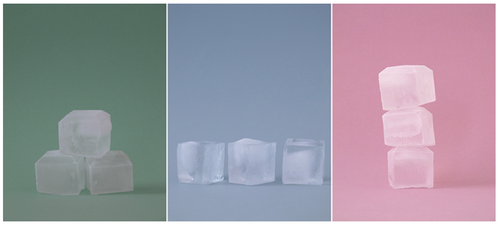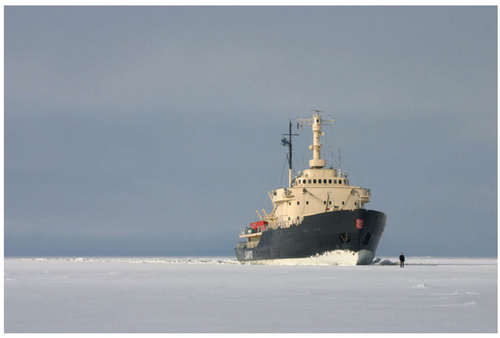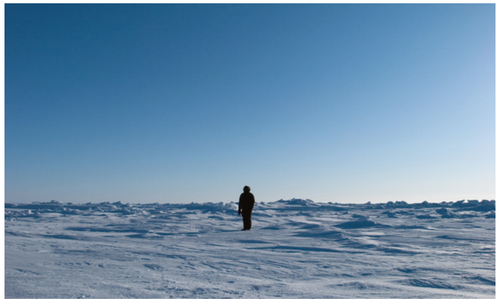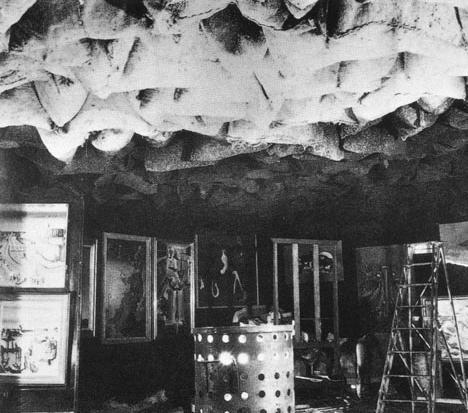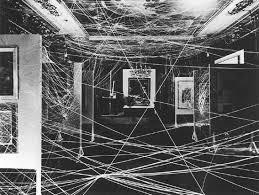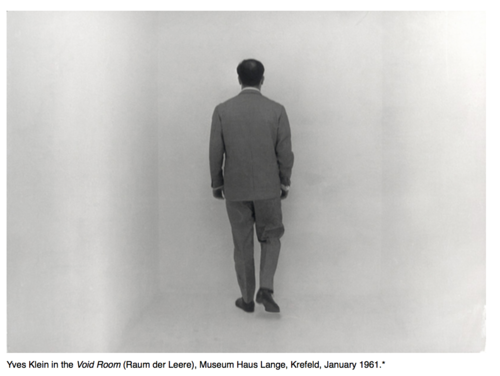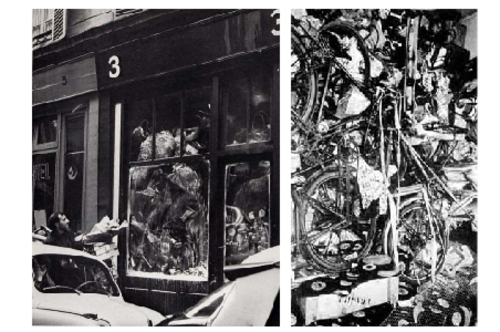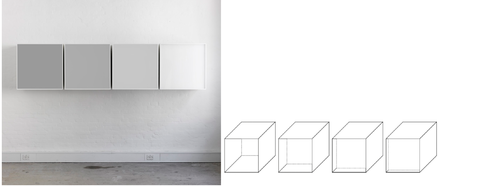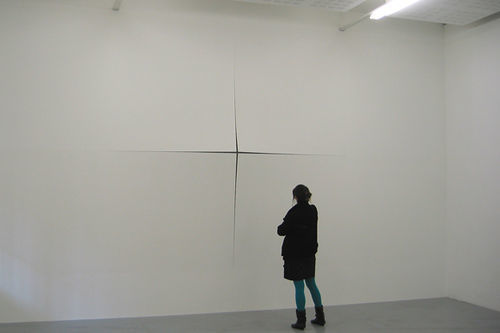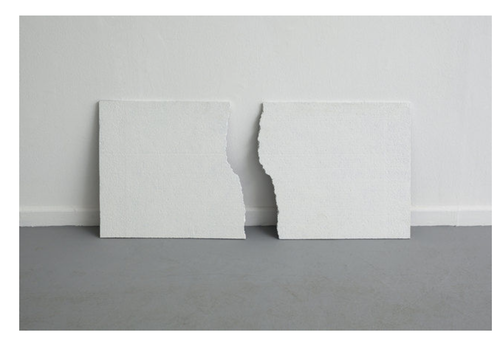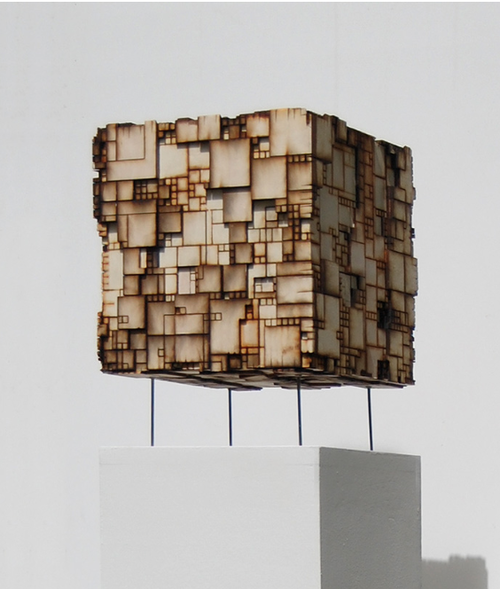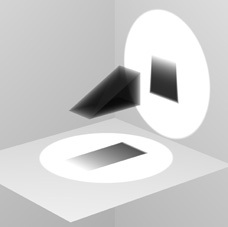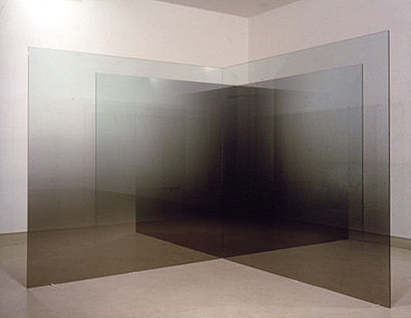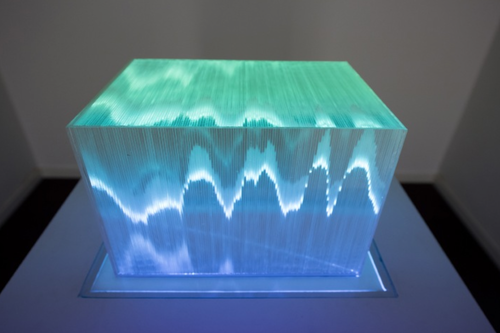Difference between revisions of "User:P.vandenberg"
P.vandenberg (talk | contribs) |
P.vandenberg (talk | contribs) |
||
| Line 196: | Line 196: | ||
De witte kubus uit de traditie van de westerse ezel schilderingen. Een andere manier van kijken, de anti-formalistische traditie. Duchamps installaties 1,200 coal bags 1983 en mile of string 1942 stappen voor eens en altijd buiten het kader van het schilderij en wordt de galerie ruimte de basis voor de kunst. | De witte kubus uit de traditie van de westerse ezel schilderingen. Een andere manier van kijken, de anti-formalistische traditie. Duchamps installaties 1,200 coal bags 1983 en mile of string 1942 stappen voor eens en altijd buiten het kader van het schilderij en wordt de galerie ruimte de basis voor de kunst. | ||
| + | De jaren na Duchamp's werken is er niet veel bereikt om de barrières van de traditie te scheiden. Een aantal kunstenaars hebben geprobeerd deze dialoog door te laten gaan. Zoals Yves Klein bijvoorbeeld, hij vertoonde een lege galerie genaamd The Void 1985 kort daarna reageerde Armen met een expositie The Full ( Le Plein ) 1960 waar mee hij een tegenstelling van Klein's werk aandraagt van een transcendentale ruimte dat de wereld is. Maar vult deze zelfde galerie ruimte met afval van de vloer tot plafond en van muur naar muur. Andere kunstenaars als Michael Asher en James Lee Byars gebruikte ook de lege expositie ruimte als hun primaire materiaal in verschillende werken. | ||
[[File:Surrealism-intexpsur-m1349652612099.jpg |500px]] | [[File:Surrealism-intexpsur-m1349652612099.jpg |500px]] | ||
Revision as of 09:09, 20 January 2015
Contents
TOOLS OF THE TRADE
Artikelen Herinneringen
Waarom het leven sneller gaat als je ouder wordt.
In het autobiografische geheugen tekenen we onze persoonlijke lotgevallen op. Het is het register dat we raadplegen als iemand ons vraagt wat onze vroegste herinnering is, hoe het huis eruit zag waar we als kind hebben gewoond of wat het laatste boek is dat we hebben gelezen. Het autobiografische geheugen groeit samen met ons op. Het is onze intiemste metgezel, maar stelt ons ook voor vragen. Waarom trekt het zich zo weinig van onze opdrachten aan, maakt het zoek wat we hadden willen bewaren, of komt het kwispelstaartend aandragen wat we juist hadden weggegooid om het kwijt te raken? Waarom zijn we vrijwel alles vergeten wat voor ons derde of vierde gebeurde? Hoe komt het dat geuren zulke vroege herinneringen losmaken? Waarom hebben we zo'n feilloos geheugen voor krenkingen? Waarom lijkt het leven sneller te gaan als je ouder wordt? En dit zijn nog maar de alledaagse vragen. Het psychologische onderzoek naar het autobiografische geheugen probeert ook op te helderen waarom iedereen nog precies weet waar hij was toen hij hoorde dat prinses Diana was verongelukt, hoe déjà vu's ontstaan, waarom onze herinnering altijd voorwaarts en nooit achterwaarts verloopt, of hoe een damgrootmeester blind tientallen partijen tegelijk weet te spelen. Hoe kan het dat stervenden soms hun hele leven 'als een film' aan zich voorbij zien trekken? De antwoorden komen soms van de zolders of uit de kelders van de psychologie, en kunnen niet altijd tot in decimalen worden gegeven, maar ze hebben hun oorsprong in de nieuwsgierigheid naar dat deel van het geheugen dat tegelijk ons verleden en onze identiteit uitmaakt.
Ronit Izraeli | Nomadic Space
Noguchi | playground equipment
Noguchi | Play Mountain, 1933
Aldo van Eyck
Ernesto Neto | The Garden 2003
Maria Anwander
Corrasable (2013) | damonzucconi
Do Ho Suh | Seoul Home
Vera Chapter | Eelko Moorer Vera is a multi-disciplinary project that recreates a fictional character’s material and sensorial world. Thirty-one photographs from a girl’s family were found a few years ago in a second hand shop in Brighton, these images have become the beginning of all of our narration. Vera is our muse. Vera is an ongoing investigation of design, art, literature, creativity, memory, narrative and how we experience our life world. Each new chapter continues to expand Vera’s fictional and collaborative biography through a series of productive, collaborative and, perhaps, combative new potentialities.
The Memory Container by Weiche Wu seeks to analyze our body, which contains both physical and emotional experiences. Translating biological data into a readable language using two ordinary objects, a scale and a height chart.
The Weight Recorder records the changing weight of a person over a period of time. The scales will eventually produce a graphic ‘life-tracing’ on a disk. The Height Recorder uses a common experience, featuring a doorframe as a height chart and leaving marks on it to show a child’s height, to record the specific memory. By using a long wooden stick hanging on the wall, the user can stand against the stick and draw a mark on it every year. After some years the stick can be cut into several pieces, according to the marks and reassembled into musical scales on a xylophone. Those scales are ordered by year, each scale represents an age of the user. Therefore, when a mallet slides across the xylophone, the sound pattern narrates the user’s height changing process.
Chinese Whisperer
Jonathan Harris | The whale hunt A storytelling experiment
Jackson Patterson | Recollected Memories His work reflects various photographs that he has merged with others from his family's albums. Patterson find himself inspired by the stories that come into focus when we collocate the medium of photography with 21st century technological practices, the cultural influence of our country’s migration west, and the personal history of family. Every piece, blended with others, processes its very own original story as well as insights about representation, fabrication and visual language. The photographer who is originally from Arizona, found during the project that the stories he discovered are not only his family's stories but are stories that exist throughout the west and beyond. 'They are stories of perseverance, pride, struggle, life and death. They are human stories intertwined in a majestic landscape.'
TEST
PAULA VAN DEN BERG
GEKOZEN OBJECT
Hil Andringa, Witte Kubus Kunststof
25 Maart 1896 - 26 Februari 1985 Beeldhouder Vormgever
WITTE KUBUS
YOUTUBE
wasted 8 hours on this [1]
Lasercutting ice
ICE
Kitty Kraus, Untitled, 2008 Courtesy of The artist and Galerie Neu, Berlin
Her series in ice, for instance, begins with a large, frozen block of ink and water and often features a light bulb and cord extending from the centre. The light is turned on, and its heat slowly begins to transform the ominous black block of ice in which it is set. Eventually, what begins as minimal plinth of frozen water becomes an abstract puddle, raising questions about the work’s essential form. It is neither a cube of ice nor an ink-stained floor. Instead the real work is something intangible and impermanent. It is simply the act of creation.
All Ice Records is a Norwegian independent record company. All Ice Records exclusively releases music played on instruments made from ice
In Thaw(2004) an empty swimming pool, a large mass of black, volcanic, basalt street bricks is interlaced with bricks of white ice. The cube will fall prey to entropy over the course of approximately 8 hours. The ice bricks fuse together and hold on to the bricks as long as possible, causing the structure to warp and sway pendulously before collapse. The brick cube rests on a steel table and hovers over a mirror, which floats above the floor. The mirror has microphones attached to it, which pick up the stochastic dripping of water and is amplified in the space, counting off the time between collapses. Both projects by Chris Musgrave.
Vinyl, 2006. The ice tray of a record by Lyota Yagi.
[2] filmpje
Boris Dornbusch, Volvic Evian Vittel, 2011
Guido van der Werve, nummer acht: everything is going to be allright, 2007
Nummer acht: everything is going to be alright shows van der Werve crossing the frozen Gulf of Finland, followed by a meter-high icebreaker that splits the ice behind him dangerously.
For nummer negen: the day I didn’t turn with the world, the artist stood on the point in the Arctic around which the Earth rotates and turned in the opposite direction for twenty-four hours.
ONDERZOEK KUBUS
De witte kubus uit de traditie van de westerse ezel schilderingen. Een andere manier van kijken, de anti-formalistische traditie. Duchamps installaties 1,200 coal bags 1983 en mile of string 1942 stappen voor eens en altijd buiten het kader van het schilderij en wordt de galerie ruimte de basis voor de kunst. De jaren na Duchamp's werken is er niet veel bereikt om de barrières van de traditie te scheiden. Een aantal kunstenaars hebben geprobeerd deze dialoog door te laten gaan. Zoals Yves Klein bijvoorbeeld, hij vertoonde een lege galerie genaamd The Void 1985 kort daarna reageerde Armen met een expositie The Full ( Le Plein ) 1960 waar mee hij een tegenstelling van Klein's werk aandraagt van een transcendentale ruimte dat de wereld is. Maar vult deze zelfde galerie ruimte met afval van de vloer tot plafond en van muur naar muur. Andere kunstenaars als Michael Asher en James Lee Byars gebruikte ook de lege expositie ruimte als hun primaire materiaal in verschillende werken.
Duchamp | 1,200 coal bags 1983
Duchamp | Mile of string 1942
Over half a century ago in Paris, Yves Klein created the first public display of invisible art: an empty white-walled room filled with what he called ‘immaterial pictorial sensibility.’
Arman | The Full (Le Plein) 1960
Monochrome Volumes (2007) by AVPD Monochrome Volumes consists of 4 identical cubic wooden boxes fixed side by side to a wall. Each box has a surface measure of 70 x 70 x 70 cm. The bottom, top, and the sides of the surfaces of boxes are painted with a nonreflecting white grounder. The front of each box is sealed with a 3 mm transluscent acrylic sheets. The inside walls of the boxes are covered with white boards on the top, bottom, sides and on the back. The inner volumes of the boxes are individually set apart because the back board inside each box is fixed in different distances to the front acrylic fronts creating four differentiated inner volumes. A special phenomena occurs by the use of the translucent acrylic fronts on the boxes with variable inner spaces. The acrylic refracts the light (natural sun light, artificial or a combination) that naturally shines through it, throws it into the inner space of the box as a diffuse light. Not being able to see the inner space of the box, the viewer perceives a reflection of its volume in the acrylic in the form of a two dimensional, vibrant, monochrome spatial surface.
Dum-dum, 2008 by Pierre Labat.
JONATHAN MONK
Broken Opposites, 2010
Combining Robert Morris’ Box With the Sound of Its Own Making with Baudrillard’s writing on the art auction this sculpture exists in eternal transactional flux. It is a physical sculpture that is perpetually attempting to auction itself on eBay.
Every ten minutes the black box pings a server on the internet via the ethernet connection to check if it is for sale on the eBay. If its auction has ended or it has sold, it automatically creates a new auction of itself.
If a person buys it on eBay, the current owner is required to send it to the new owner. The new owner must then plug it into ethernet, and the cycle repeats itself.
Holger Lippmann
packing BOX 01 is realizes using a packing algorithm to generate different square packing vector files via processing.
later on build up of a plywood box of 4 layers 4mm plywood and the laser cutting of each side and the removal of the non clued parts.
32 x 32 x 32 cm, plywood 2012/2013
Thomas Freiler - Graukeil/Grayscale, 3D Rendering, 2009 Een tentoonstelling als experimentele opstelling waarbij de foto geeft informatie over zichzelf en als een verzameling en argumentatie zelf ondervraagd reflecterend . Thomas Freiler benadert het medium aan de ene kant aan de kant van hun wetenschappelijke voorwaarden en instrumentale constructies en ten tweede op het gebied van het gebruik en de context . Foto regelingen en juxtaposities thematiseren elementaire fotografische parameters of fotografische weergave in de analoge en digitale domein , maar ook de voorwaarden en de impact van de ontwikkelingen en standaardisatie van fotografische technieken op concrete beelden. De media is zoals altijd veel op haar beurt in de formulering van de boodschap , en Freiler verder met deze alfabetten van de fotografie , traditionele en nieuwe , hedendaagse beelden uit elkaar
Larry Bell 6x6x4-D,A 1995, four 12mm glass panels coated with nickel-chrome, 6' x 6' x 1/2" Installation: Galerie Montenay, Paris 1995 ‘Visibility depends on the action of the visible bodies on light. Either a body absorbs light, or it reflects or refracts it, or does all these things.’ The Invisible Man, H G Wells (1897)
Evan Roth Gold (Graffiti Analysis Series) Acrylic 28cm x 19cm x 19cm Paris 2011
